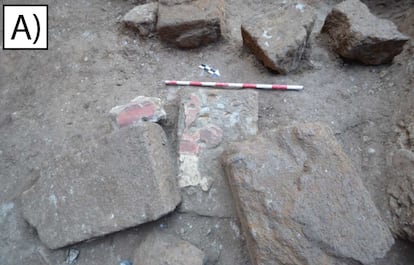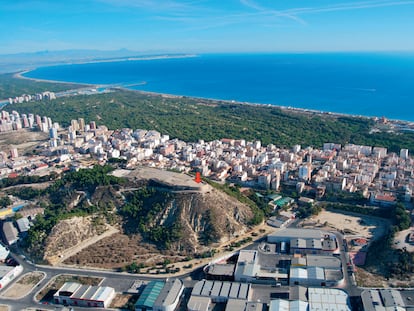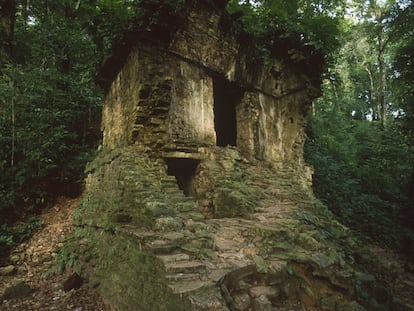A massive tsunami destroyed the Spanish city of Seville in the 3rd century, new study finds
A team of European archeologists say a gigantic tidal wave traveled more than 25 miles inland, destroying the Roman port city of Hispalis (Seville)


In the 1970s, two Roman inscriptions — dated from 245 to 253 AD — were discovered in Écija (known in ancient Roman times as Astigi), a city in Spain’s southern province of Seville. The writings on the tablets suggest that the emperor at the time had exempted the Roman province of Baetica (roughly the equivalent of modern-day Andalusia, a region of southern Spain) from taxes. But the inscriptions failed to explain why, and the reason has remained a mystery for decades. In a new study published in Natural Science in Archaeology, a team of European and U.S. scientists and researchers say they have finally found an explanation. The article, A Third Century AD Extreme Wave Event Identified in a Collapse Facies of a Public Building in the Roman City of Hispalis (Seville, Spain), provides a surprising answer: A gigantic tsunami that began in the Bay of Cadiz crashed into land, causing numerous coastal settlements to be abandoned and engulfing everything its path, including the city of Seville, located 45 miles inland from the sea. The discovery was made following the excavation and study of a public building from the Roman era, destroyed during what researchers now believe was a massive tidal wave event. The building once stood in what is now the Patio de Banderas public square in Seville, adjacent to the capital city’s main cathedral.
The report, authored by experts from universities in Spain, France, Germany, and the U.S. describes how, in 400 BC, the Atlantic Ocean had created a large lagoon, known in antiquity as Lacus Ligustinus, at the mouth of the Guadalquivir River. The lake was fed by three river corridors, one of which led directly to Hispalis. The river was large enough that medium-sized ships could use it to transport minerals, oil, wine, and other goods as far inland as Alcalá del Río, roughly 10 miles past Seville. It is estimated that the Port of Seville was quite large, even at that time, stretching over a kilometer in length and moving some 18,000 tons of merchandise per year.
Between 2009 and 2014, a team of archeologists excavated the Patio de Banderas site. “Impressive urban stratigraphy dated between the ninth century BC and the thirteenth century AD,” the report reads. “From all these findings, a very well-preserved Roman public building [...] stands out. The building [was] constructed in opus africanum [a form of Roman brick masonry] during the Late Republic (60 to 30 BC).” It was organized around a central courtyard, with a gallery of columns at its southern end. Experts identified the site as a commercial and administrative space associated with the Hispalis river port.
Analyzing the ruins at the Patio de Banderas, the first team of archeologists to study the site concluded that the ancient building had been repaired several times under the Flavian Dynasty (late 1st century AD), but especially between the years 200 and 225 AD, when there was “widespread collapse of the architectural remains [and] most of the southern walls appear to have been displaced from their original position [by an external force], always in the same direction, toward the northwest.” At the time, the archeologists ruled out a tsunami for two main reasons: because the site is 22 feet above sea level, and because the distance between Híspalis and the Lacus Ligustinus was almost 25 miles in Roman times (now it’s more than 45 miles). In other words, for a tsunami to destroy the building, it would have had to be bigger than any on record — the mother of all tsunamis.

The authors of the new report ―Mario Gutiérrez-Rodríguez, José N. Pérez-Asensio, Francisco José Martín Peinado, Enrique García Vargas, Miguel Ángel Tabales, Antonio Rodríguez Ramírez, Eduardo Mayoral Alfaro and Paul Goldberg ― were not satisfied with the first team’s findings. They believed that an opinion based on a visual analysis of the site “was not enough,” so they undertook a multidisciplinary study that combined macro- and microscale methods and techniques. They used carbon-14 dating, micromorphology, mineralogy, geochemistry, micropaleontology, ultraviolet fluorescence microscopy, accelerator mass spectrometry, radiocarbon calibration, and ceramic and materials science, among other techniques, to re-examine the site and search for new answers.
The team of researchers began to analyze “a microlaminated deposit, alternating sandy and silty beds, and with abundant fresh-fragmented shell,” as well as brick columns, several calcarenite ashlars, plaster and paint, a fluted column, fragmented marble from different Mediterranean quarries, an inscription, and a complete marble votive relief, typical of the Cult of Isis. What was especially striking about the site, the team discovered, was that “the materials [did] not belong to the building excavated at the Patio de Banderas, since it was constructed with different materials (mainly limestone and brick) and different techniques.” Rather, these exogenous architectural elements had been chemically transformed by a “highly energetic event,” which transported them to the Patio de Banderas, where they were trapped inside the building due to flooding from the tsunami. The report calculates that the flooding occurred between the years 197 and 225.

Among the objects excavated at the site was an inscription reading “IIAVRHERACLAE / PATETFILFBAR AVR HERACLAE/ PAT ET FIL / F BAR.” The artifact was originally fabricated in a ceramics workshop owned by Roman emperors Septimius Severus, Antonino Caracalla, and Geta, which once stood on the banks of the Guadalquivir River. The inscription references Aurelii Heraclae, the family of freedmen who managed the workshop between 197 and 207 AD — the same period from which the other artifacts found on the site date.

The study thus concludes that “the Patio de Banderas deposit was generated during an extreme wave event,” and that the building acted as a trap for the artifacts transported inland by the tsunami. “With the data we actually have, and considering the distance at this point from the coast in Roman times [about 25 miles], and also taking into account the distance from this point to the coast in Roman times [about 40 kilometers], we affirm that the most probable origin of the deposit identified is the combined action of an energetic storm, which might have produced waves and currents in the Lacus Ligustinus energetic enough to transport estuary and marine fauna, together with extreme rainfall and flooding from the Guadalquivir River.”
These new findings suggest an answer to the mystery posed by the inscriptions found in Écija that indicate Baetica’s status as prouincia immunis — a province exempt from taxes. As the authors of the Patio de Banderas study note, this status was most commonly granted in the aftermath of natural disasters. Like, for example, a tsunami.
Tu suscripción se está usando en otro dispositivo
¿Quieres añadir otro usuario a tu suscripción?
Si continúas leyendo en este dispositivo, no se podrá leer en el otro.
FlechaTu suscripción se está usando en otro dispositivo y solo puedes acceder a EL PAÍS desde un dispositivo a la vez.
Si quieres compartir tu cuenta, cambia tu suscripción a la modalidad Premium, así podrás añadir otro usuario. Cada uno accederá con su propia cuenta de email, lo que os permitirá personalizar vuestra experiencia en EL PAÍS.
¿Tienes una suscripción de empresa? Accede aquí para contratar más cuentas.
En el caso de no saber quién está usando tu cuenta, te recomendamos cambiar tu contraseña aquí.
Si decides continuar compartiendo tu cuenta, este mensaje se mostrará en tu dispositivo y en el de la otra persona que está usando tu cuenta de forma indefinida, afectando a tu experiencia de lectura. Puedes consultar aquí los términos y condiciones de la suscripción digital.
More information
Últimas noticias
Welcome to the post-religion era: The idea of Christianity as the absolute truth has become obsolete
‘I thought you would like it’: The risky sexual practice popularized by TV shows and TikTok
The digitalization of tourism: ‘They promise experiences and gave us the worst possible one’
Mexican peso defies uncertainty with forecasts of a new period of stability in 2026
Most viewed
- Sinaloa Cartel war is taking its toll on Los Chapitos
- Reinhard Genzel, Nobel laureate in physics: ‘One-minute videos will never give you the truth’
- Oona Chaplin: ‘I told James Cameron that I was living in a treehouse and starting a permaculture project with a friend’
- Why the price of coffee has skyrocketed: from Brazilian plantations to specialty coffee houses
- Silver prices are going crazy: This is what’s fueling the rally










































